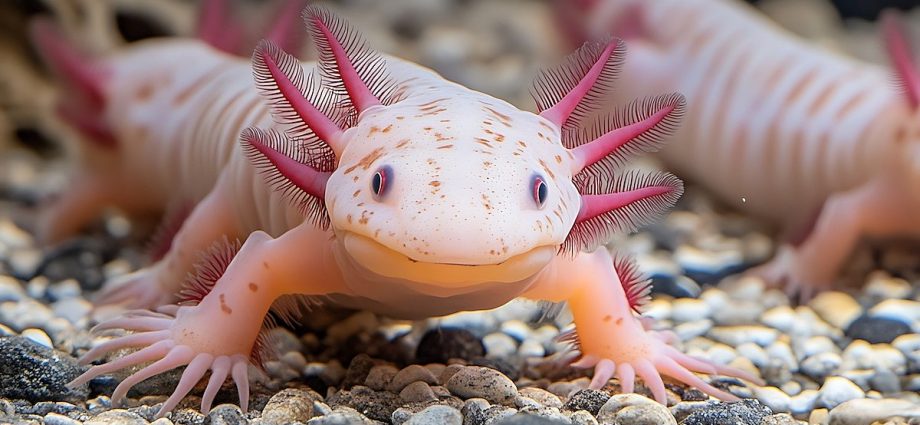WEDNESDAY, June 11, 2025 (HealthDay News) — With their goofy grins and feathery gills, axolotls have become stars of the pet world and video games like Minecraft.
But these small, smiling salamanders are also helping scientists explore a medical mystery: Can people someday regrow arms or legs?
Axolotls are special because they can regrow body parts no matter the age. Lose a leg? They’ll grow it back. Damage to their heart, lungs or even brain? They can also repair that!
“This species is special,” lead researcher James Monaghan, a biologist at Northeastern University in Boston, told The Washington Post. They have “really become the champion of some extreme abilities that animals have.”
In a new study — published June 10 in Nature Communications — Monaghan’s team used genetically engineered axolotls that glow in the dark to learn how this amazing process works.
One mystery in limb regrowth is how cells “know” which part of the limb to rebuild. If an axolotl loses its upper arm, it grows back the entire arm. But if the injury is farther down, only the lower arm and hand regrow.
“Salamanders have been famous for their ability to regenerate arms for centuries,” Monaghan said. “One of the outstanding questions that has really plagued the field is how a salamander knows what to grow back.”
The answer may be a small molecule called retinoic acid. It’s related to vitamin A and often used in skin-care products under the name retinol.
The molecule acts like a GPS, helping cells know where they are on the body and what part to rebuild.
Monaghan’s team worked with axolotls that were genetically engineered to glow when retinoic acid was active. Then, they amputated limbs — after giving the animals anesthesia — and tracked their health, The Post reported.
Monaghan said researchers monitored their health closely.
“They don’t show signs of pain or distress after limb amputation the way mammals might, and they regenerate fully within weeks,” he said.
When axolotls were given a drug that blocked the breakdown of retinoic acid, their limbs didn’t regrow right — an upper arm would form where a lower arm should be. Axolotls not given the drug regrew their limbs normally.
This suggests that retinoic acid tells cells where they are and what part to grow. Higher levels of the acid seem to signal a spot closer to the body’s center, according to The Post.
“While we are still far from regenerating human limbs, this study is a step in that direction,” said Prayag Murawala, a researcher at MDI Biological Laboratory in Maine, who helped make the glowing axolotls used in the study.
Monaghan thinks this could help humans someday.
“We all have the same genes,” he said. “We’ve all made these limbs when we were embryos.”
The challenge is figuring out how to turn those same genetic blueprints back on later in life — something axolotls can do but humans can’t yet.
“It’s one of the oldest questions in biology, but it’s also the most futuristic-looking,” he said.
Thanks to a growing interest in axolotls, especially among kids, this unique animal is helping to drive cutting-edge science.
“It’s a little surreal,” Monaghan added. “You just see axolotls at the airport, axolotls at the mall. My kids are coming home with axolotl toys all the time, because people know what I do.”
More information
The San Diego Zoo has more on axolotls.
SOURCE: The Washington Post, June 10, 2025
Copyright © 2025 HealthDay. All rights reserved.

